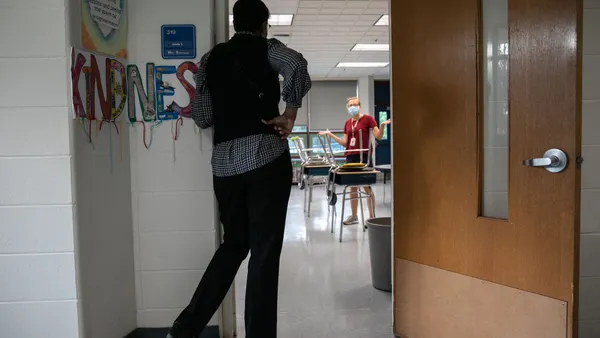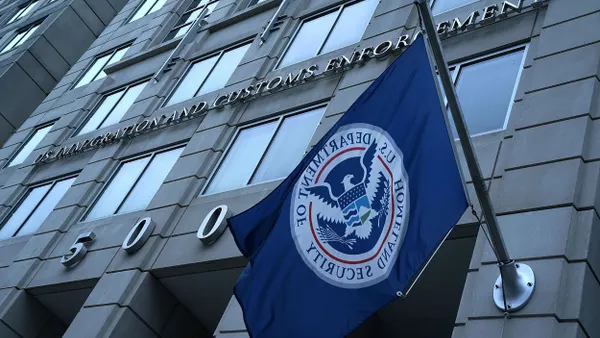Dive Brief:
- States should give clear guidance on how school districts should respond to immigration enforcement near school buildings, according to recommendations issued by nonprofit EdTrust this month.
- In addition, EdTrust said states should require districts to affirm that all students, regardless of immigration status, have the right to enroll in public schools.
- The guidance comes as some districts are experiencing notable increases in chronic absenteeism. A contributing factor, some educators and advocates said, is heightened immigration enforcement by the federal government — and resulting fears from families about sending their children to school.
Dive Insight:
Research earlier this year from KFF, a health policy organization, showed that keeping students home from school due to immigration enforcement fears can hurt students' academic progress — and also cause schools to take a funding hit because of lowered enrollment numbers.
Many states have made progress in reducing chronic absenteeism rates since the COVID-19 pandemic disrupted in-person learning. However, attendance levels overall have not caught up to their pre-pandemic baseline, according to FutureEd, an independent think tank at Georgetown University’s McCourt School of Public Policy.
For example, in Ohio, chronic absenteeism rate stood at 16.7% in 2018-19, almost doubled to 30.2% in 2021-22 and fell to 25.1% in 2024-25. In Michigan, chronic absenteeism rate in 2018-19 was at 19.7%, increased to 38.5% in 2021-22 and then dropped to 27.9% in 2024-25, according to FutureEd.
Chronic absenteeism is defined as missing 10% or more of the school year, or about 18 days, for any reason.
Some immigrant families, meanwhile, have been hesitant to send their children to school due to fear of immigration enforcement activity, according to educators and immigration experts. In response, some schools have offered legal aid and other resources to affected families.
For example, Alberto Carvalho, superintendent of the Los Angeles Unified School District, said in late August that the district added bus routes and provided counselors and social workers to support families after the school day. Additionally, Carvalho said LAUSD was coordinating legal aid for families through its charitable foundation.
Some districts are providing training to educators in how to respond to immigration enforcement, as well as how to communicate with families about their rights — including that schools may not deny students a free public education based on their immigration status, under the U.S. Supreme Court's 1982 Plyler v. Doe decision.
In September, the nation’s two largest teachers unions joined a lawsuit challenging federal immigration enforcement on school grounds and other sensitive locations. That case is currently on hold because U.S. Department of Justice attorneys are not permitted to work during the federal government shutdown.
According to research from Fwd.us, a nonprofit social welfare organization, about 620,000 K-12 students were in the U.S. without legal permission in 2021. The organization estimated that most states had at least 1,000 such students in K-12 schools and that some states had much higher numbers, including Texas (111,000), Florida (74,000), and California (72,000).
Additionally, Fwd.us said most states had tens of thousands of K-12 students with at least one parent who was in the country without legal permission.
EdTrust recommends states support districts in developing safe and welcoming school climates through trauma-informed training, culturally responsive practices and multilingual communications that are sensitive to the stress immigrant families may be facing. States should also better understand model practices within districts and find ways to scale those approaches, according to the organization, which promotes educational equity for students of color and students from low-income families.
The EdTrust report highlights four states — California, Delaware, Maryland and New York — that have released official guidance available to the public on immigration enforcement at schools.
All educators have a responsibility to support each and every student, including immigrant students and children of immigrant parents, according to the American School Counselors Association.
"Through the implementation of a school counseling program, school counselors can foster a school culture that is inclusive, safe and affirming for each and every student, regardless of race, ethnicity or immigration status," the association said in a paper this month.












